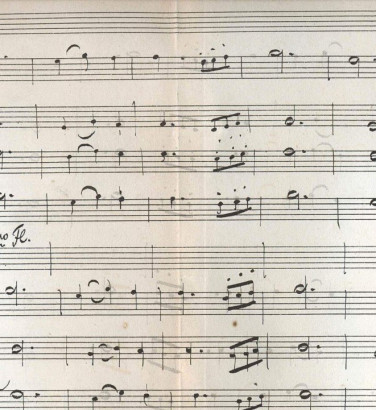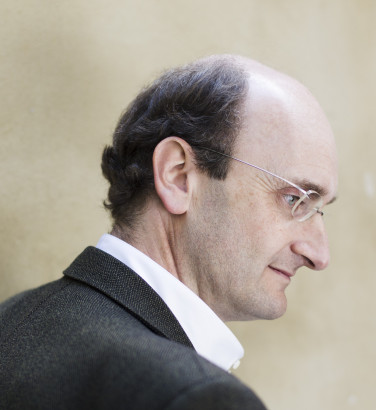
Beethoven's Seventh: the apotheosis of the dance?
10 Jun 2024
News Story
Beethoven and Wagner
A number of memorable epithets about cornerstones of the repertoire were coined during the Romantic era, arguably not always to their benefit. Schumann’s comment on the “Grecian lightness and grace” of Mozart’s Symphony No 40 may not have stood the test of time - it is decidedly out of step with how we approach the work today - but our appreciation of Beethoven’s Symphony No 4 is still apt to be tempered by his description of it as “a slender Greek maiden between two Norse giants”. While it admittedly lacks the significance of the symphonies to either side of it, the Fourth Symphony is a good deal more powerful (and fun) than Schumann’s assessment would suggest.
Beethoven’s Symphony No 7, however, has come almost to be defined by Wagner declaring it to be “the apotheosis of the dance”, a remark invariably quoted shorn of its original context. It comes from Das Kunstwerk der Zukunft (The Artwork of the Future, 1850), a treatise in which he set out his desire to combine multiple artforms into a single entity or Gesamtkunstwerk (roughly translated, total work of art). This would eventually lead to the performance of his music dramas – a term he preferred to opera – at the Bayreuth Festival Theatre, built specifically for this purpose.
Beethoven is first mentioned in Das Kunstwerk as the hero who charted his own course across new waters (to use Wagner’s own metaphor), and his name crops up a further 22 times, more frequently than any other composer. Wagner holds him up as an ideal (with only Shakespeare being deemed his equal), singling out the symphonies for particular praise: the Choral, for instance, is “the redemption of music from separate elements into universal art”.
With this in mind, it is worth quoting his appraisal of the Seventh Symphony at greater length. Loosely translated:
In it all impetuosity, all the longing and raging of the heart turn into blissfully arrogant joy, which leads us with Bacchanalian omnipotence through all natural realms, all storms and seas of life, joyously self-confident wherever we take a bold step in this mortal dance of the spheres.
This symphony is the apotheosis of the dance itself: dance in its most exalted form, the most blissful of physical movement made manifest in sound. Melody and harmony come together on the skeleton of rhythm to become flesh, a solid human form which takes up the steps of the dance before our very eyes – a body of supple limbs and tender flexibility, slender and voluptuous, its mood by turns sweet, bold, earnest, boisterous, thoughtful and exultant. The immortal melody continues until, in a final whirl of pleasure, the final embrace concludes with a jubilant kiss.
Given the density of Wagner’s writing, it's understandable that “the apotheosis of the dance” should be the only phrase generally retained from this passage, but these few words have affected our perception of the symphony ever since. Whereas our understanding and appreciation of any given piece of music changes over time, interpretations of the Seventh Symphony have rarely strayed from this exuberant line, and perhaps blinded us to other possible takes on the work.
Consider the slow movement, for instance. Its main theme (first heard in the low strings) opens on a note which is played a full dozen times before moving, its rhythm a steady tread more reminiscent of a funeral march than any dance. Now reexamine the symphony as a whole from this perspective, as music driven by its obsessive rhythms: the unrelenting energy of the outer movements would immediately take on a different character. It might be a bit of a stretch, but an argument could even be made for putting the Seventh Symphony on a par with the closing pages of Tchaikovsky’s Fourth or Shostakovich’s Fifth Symphonies, in which the listener can be browbeaten into submission.
So as you next listen to the work (perhaps you heard the Orchestra play it in the 2024 Summer Tour), try to put Wagner’s epithet to one side. Or for a different take on Beethoven's Seventh as dance, try this ...
Related Stories
![]()
Unfinished symphonies
15 December 2025
Your starter for ten: besides Schubert, who has an unfinished symphony to their name?![]()
Andrew Manze: "I've always loved Viennese waltzes and polkas"
1 December 2025
Our Principal Guest Conductor is really looking forward to conducting our Viennese New Year concerts!![]()
The medieval carol
24 November 2025
For this year's Christmas article, we look back at some very early festive carols ...


